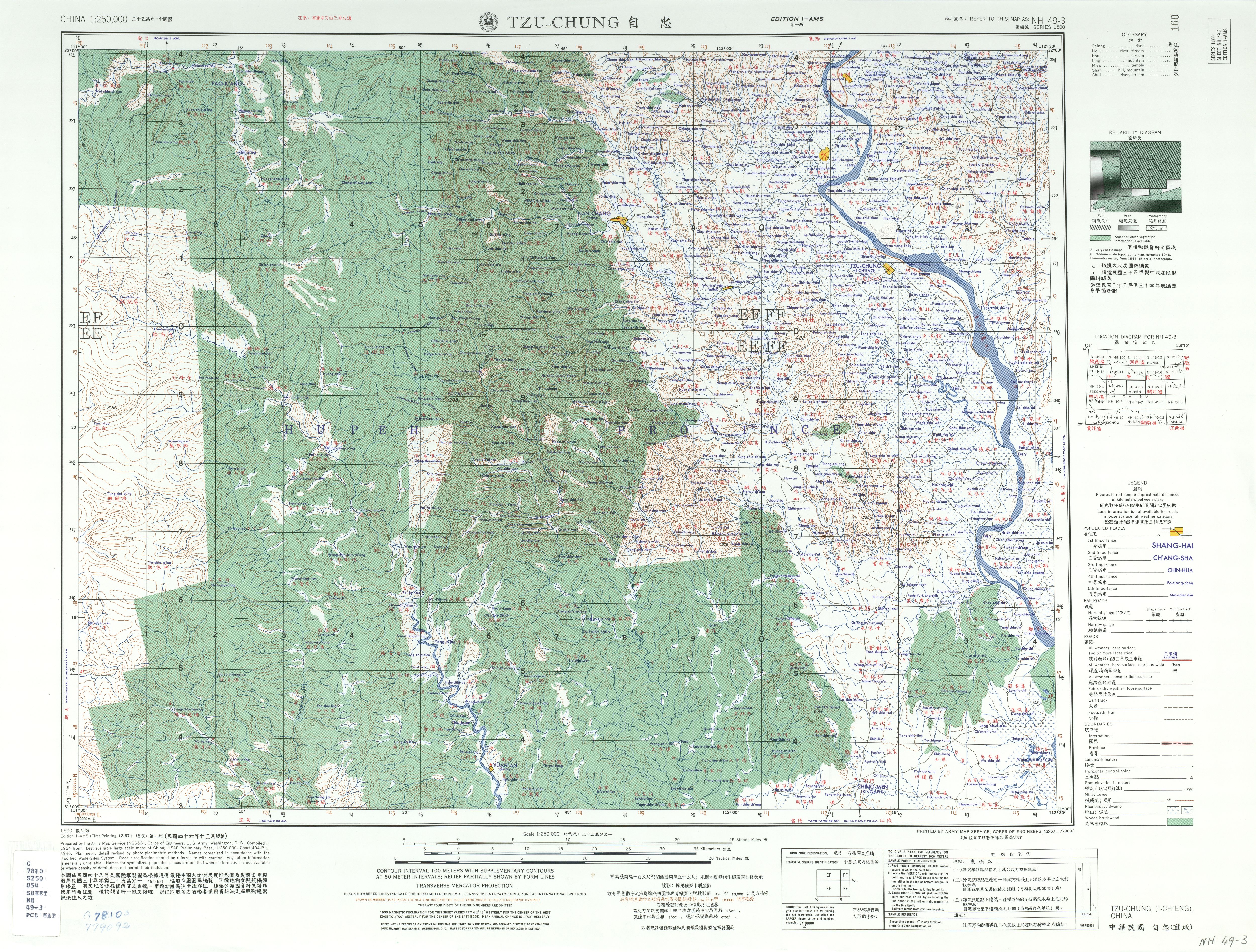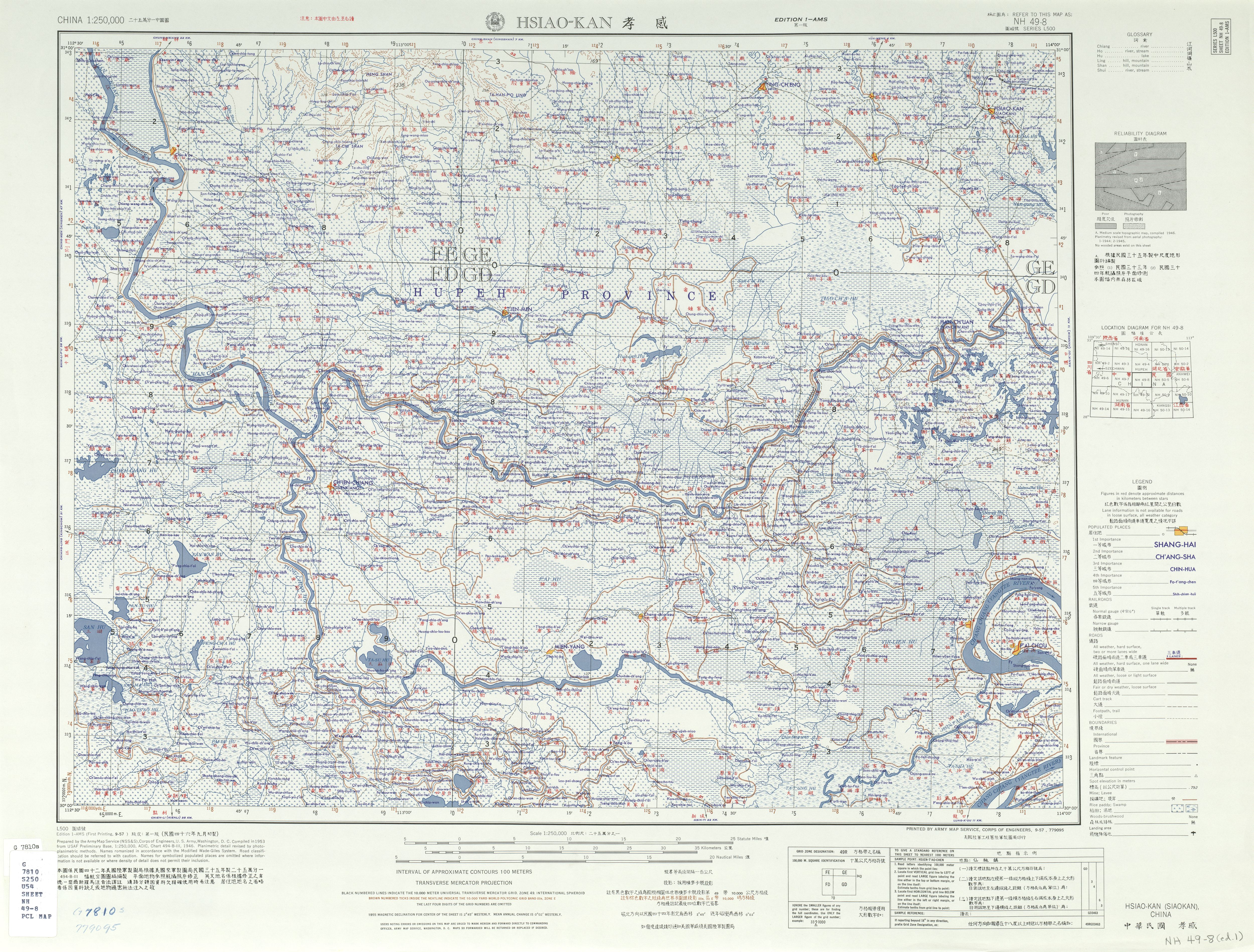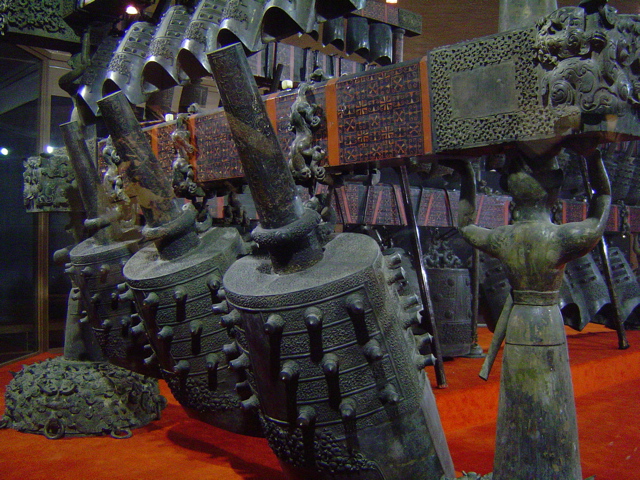|
2021 China Floods
Several floods struck China starting in June 2021, most of them caused by heavy rainfalls in different areas. According to the World Meteorological Organization, such heavy rains are frequently a result of climate change. The most notable floods being the 2021 Henan floods, which left 398 dead or missing. Heilongjiang Since mid-June, water levels of Heilongjiang and Nenjiang rivers have been rising. Heilongjiang river, also known as the Amur across the border in Russia, also flooded Russia’s Amur Oblast. As of 26 June, over 19,000 people had evacuated and 42,000 people were affected by the flooding in Daxinganling, Heihe and Mudanjiang. Thousands of hectares of crops have been damaged. Chongqing Heavy rainfall was reported on 28 June 2021 in Chongqing municipality, forcing authorities to activate an emergency response system. From 26 to 28 August, heavy rains and floods have affected Qijiang District and Hechuan District, destroying 105 houses. Guizhou Heavy rains ... [...More Info...] [...Related Items...] OR: [Wikipedia] [Google] [Baidu] |
China
China, officially the People's Republic of China (PRC), is a country in East Asia. It is the world's most populous country, with a population exceeding 1.4 billion, slightly ahead of India. China spans the equivalent of five time zones and borders fourteen countries by land, the most of any country in the world, tied with Russia. Covering an area of approximately , it is the world's third largest country by total land area. The country consists of 22 provinces, five autonomous regions, four municipalities, and two Special Administrative Regions (Hong Kong and Macau). The national capital is Beijing, and the most populous city and financial center is Shanghai. Modern Chinese trace their origins to a cradle of civilization in the fertile basin of the Yellow River in the North China Plain. The semi-legendary Xia dynasty in the 21st century BCE and the well-attested Shang and Zhou dynasties developed a bureaucratic political system to serve hereditary monarchies, or dyna ... [...More Info...] [...Related Items...] OR: [Wikipedia] [Google] [Baidu] |
Zhengzhou
Zhengzhou (; ), also spelt Zheng Zhou and alternatively romanized as Chengchow, is the capital and largest city of Henan Province in the central part of the People's Republic of China. Located in north-central Henan, it is one of the National Central Cities in China, the centre of Central Plains area, and serves as the political, economic, technological, and educational center of the province. The Zhengzhou metropolitan area (including Zhengzhou and Kaifeng) is the core area of the Central Plains Economic Zone. The city lies on the southern bank of the Yellow River. Zhengzhou is a major hub of China's national transportation network, with railways connecting Zhengzhou to Europe and an international airport. Zhengzhou is a and a State-list Famous Historical and Culture City. As of 2020, there are two World Cultural Heritage Sites in Zhengzhou. The Zhengzhou Commodity Exchange (ZCE) is China's first futures exchange. Zhengzhou Airport Economy Zone is China's first Airport E ... [...More Info...] [...Related Items...] OR: [Wikipedia] [Google] [Baidu] |
July 2021 Events In China
July is the seventh month of the year in the Julian and Gregorian calendars and is the fourth of seven months to have a length of 31 days. It was named by the Roman Senate in honour of Roman general Julius Caesar in 44 B.C., it being the month of his birth. Before then it was called Quintilis, being the fifth month of the calendar that started with March. It is on average the warmest month in most of the Northern Hemisphere, where it is the second month of summer, and the coldest month in much of the Southern Hemisphere, where it is the second month of winter. The second half of the year commences in July. In the Southern Hemisphere, July is the seasonal equivalent of January in the Northern hemisphere. "Dog days" are considered to begin in early July in the Northern Hemisphere, when the hot sultry weather of summer usually starts. Spring lambs born in late winter or early spring are usually sold before 1 July. July symbols *July's birthstone is the ruby, which symbolize ... [...More Info...] [...Related Items...] OR: [Wikipedia] [Google] [Baidu] |
June 2021 Events In China
June is the sixth month of the year in the Julian and Gregorian calendars and is the second of four months to have a length of 30 days, and the third of five months to have a length of less than 31 days. June contains the summer solstice in the Northern Hemisphere, the day with the most daylight hours, and the winter solstice in the Southern Hemisphere, the day with the fewest daylight hours (excluding polar regions in both cases). June in the Northern Hemisphere is the seasonal equivalent to December in the Southern Hemisphere and vice versa. In the Northern Hemisphere, the beginning of the traditional astronomical summer is 21 June (meteorological summer begins on 1 June). In the Southern Hemisphere, meteorological winter begins on 1 June. At the start of June, the sun rises in the constellation of Taurus; at the end of June, the sun rises in the constellation of Gemini. However, due to the precession of the equinoxes, June begins with the sun in the astrological sign of G ... [...More Info...] [...Related Items...] OR: [Wikipedia] [Google] [Baidu] |
Floods In China
Natural disasters in China are the result of several different natural hazards that affect the country according to its particular geographic and geologic features affecting both humans and animals. Perception of disasters Natural disasters reveal the traditional view of disasters as divine retribution: ''tian zai'' (天災), literally 'heavenly disaster'. In ancient beliefs, natural disasters were seen as Heaven's response to immoral human behaviour, whereby the conduct of different individuals carried different weights. While the behaviour of common people ranked last, the actions of bureaucrats had a greater effect. Given that in Imperial China the emperor's behaviour was believed to be the most important, popular belief was that the emperor should attempt to prevent disasters by ensuring his conduct was in following with moral codes – and if a disaster should occur, he was responsible for addressing the consequences. According to the Overseas Development Institute, the sta ... [...More Info...] [...Related Items...] OR: [Wikipedia] [Google] [Baidu] |
2021 Floods
2021 saw some of the most extreme flooding on record, in large part driven by climate change. The insurance industry analysis group Swiss RE found that 31% of global insurance losses were from flooding, and that nearly a fifth of the economic damage from natural disasters was uninsured. Significant floods Australia China Europe India Uttarakhand South India Malaysia 20-21 21-22 North America Hawaii Pacific Northwest See also * Weather of 2021 * Tropical cyclones in 2021 During 2021, tropical cyclones formed in seven major bodies of water, commonly known as tropical cyclone basins. Tropical cyclones will be assigned names by various weather agencies if they attain maximum sustained winds of . During the year, one ... Notes References {{2021 floods 2020s floods ... [...More Info...] [...Related Items...] OR: [Wikipedia] [Google] [Baidu] |
2021 European Floods
In July 2021, several European countries were affected by severe floods. Some were catastrophic, causing deaths and widespread damage. The floods started in the United Kingdom as flash floods causing some property damage and inconvenience. Later floods affected several river basins across Europe including Austria, Belgium, Croatia, Germany, Italy, Luxembourg, the Netherlands, and Switzerland. At least 243 people died in the floods, including 196 in Germany, 43 in Belgium, two in Romania, one in Italy and one in Austria. Belgian Minister of Home Affairs Annelies Verlinden described the events as "one of the greatest natural disasters our country has ever known." German minister-president Malu Dreyer of the Rhineland-Palatinate state called the floods "devastating". In addition to the confirmed fatalities, the flooding led to widespread power outages, forced evacuations and damage to infrastructure and agriculture in the affected areas. The damage to infrastructure was especi ... [...More Info...] [...Related Items...] OR: [Wikipedia] [Google] [Baidu] |
Yicheng, Hubei
Yicheng () is a city in northwestern Hubei, People's Republic of China. It is under the administration of Xiangyang City. History In 1945, in order to commemorate the anti-Japanese generals Zhang Zizhong in the Battle of Zaoyi, renamed Zizhong County, belonged to the Office of the Administrative Inspector of the Fifth District of Hubei Province. After December 1947, the area east of Hanshui was under the jurisdiction of the Chinese Communist Party (liberated zone). After July 1948, the west of Hanshui was under the jurisdiction of the Chinese Communist Party. In 1949, Yicheng County was restored and it was subordinated to the Commissioner of the Xiangyang Administrative Region of Hubei Province. In June 1994, Yicheng County was cancelled and Yicheng City was established with the approval of the State Council. Geography Yicheng City is located in the northwest of Hubei Province, Hanjiang midstream. East boundary Suizhou, Zaoyang, south Zhongxiang, Jingmen, west Nanjing, north to ... [...More Info...] [...Related Items...] OR: [Wikipedia] [Google] [Baidu] |
Xiaogan
Xiaogan () is a prefecture-level city in east-central Hubei province, People's Republic of China, some northwest of the provincial capital of Wuhan. According to the 2020 census, its population totaled 4,270,371, of whom 988,479 lived in the built-up (''or metro'') area of Xiaonan District. The city name Xiaogan, meaning ''Filial Piety Moves Tian'' (), is from the story of Dong Yong (), who sold himself for his father's funeral, in ''The Twenty-four Filial Exemplars''. The Sheshui River originates in Xiaogan's Dawu County. On the third day of the third month of the lunar calendar, many in Wuhan eat 'di cai zhu ji dan' () which is supposed to prevent illness in the coming year. This practice is related to a story involving Shennong in Xiaogan. Administrative divisions Since 2000, Xiaogan has been divided into 1 district, 3 county-level cities and 3 counties: *Xiaonan District () *Yingcheng City () *Anlu City () *Hanchuan City () *Xiaochang County () * Dawu County () *Yunmeng Cou ... [...More Info...] [...Related Items...] OR: [Wikipedia] [Google] [Baidu] |
Xiangyang
Xiangyang is a prefecture-level city in northwestern Hubei province, China and the second largest city in Hubei by population. It was known as Xiangfan from 1950 to 2010. The Han River runs through Xiangyang's centre and divides the city north–south. The city itself is an agglomeration of two once separate cities: Fancheng and Xiangyang (or Xiangcheng), and was known as Xiangfan before 2010. What remains of old Xiangyang is located south of the Han River and contains one of the oldest still-intact city walls in China, while Fancheng is located to the north of the Han River. Both cities served prominent historical roles in both ancient and pre-modern Chinese history. Today, the city has been a target of government and private investment as the country seeks to urbanize and develop the interior provinces. Its built-up area made up of 3 urban districts had 2,319,640 inhabitants at the 2020 census while the whole municipality contained approximately 5,260,951 people. Histor ... [...More Info...] [...Related Items...] OR: [Wikipedia] [Google] [Baidu] |
Suizhou
Suizhou (), formerly Sui County (), is a prefecture-level city in northern Hubei province, People's Republic of China, bordering Henan province to the north and east. Etymology The Sui in Suizhou is derived from the ancient 'Suishizu' () . Administration The prefecture-level city of Suizhou administers 5 county-level divisions, including 1 district, 1 county-level city, 1 county and 2 other areas. * Zengdu District () * Guangshui City () * Sui County () * Suizhou Economic Development Area () * Dahongshan Scenic Area () These are further divided into 54 township-level divisions, including 36 towns, 11 townships and 7 subdistricts. History Suizhou has a long history. During the Spring and Autumn Period and Warring States Period (771−221 BCE), it was the territory of the State of Sui/Zeng and within the cultural sphere of the State of Chu. As a prefecture-level city Suizhou has a short history with its current status only granted by the State Council in June 2000. ... [...More Info...] [...Related Items...] OR: [Wikipedia] [Google] [Baidu] |
Jiangsu
Jiangsu (; ; pinyin: Jiāngsū, Postal romanization, alternatively romanized as Kiangsu or Chiangsu) is an Eastern China, eastern coastal Provinces of the People's Republic of China, province of the China, People's Republic of China. It is one of the leading provinces in finance, education, technology, and tourism, with its capital in Nanjing. Jiangsu is the List of Chinese administrative divisions by area, third smallest, but the List of Chinese administrative divisions by population, fifth most populous and the List of Chinese administrative divisions by population density, most densely populated of the 23 provinces of the People's Republic of China. Jiangsu has the highest GDP per capita of Chinese provinces and second-highest GDP of Chinese provinces, after Guangdong. Jiangsu borders Shandong in the north, Anhui to the west, and Zhejiang and Shanghai to the south. Jiangsu has a coastline of over along the Yellow Sea, and the Yangtze River passes through the southern part ... [...More Info...] [...Related Items...] OR: [Wikipedia] [Google] [Baidu] |

.jpg)

.jpg)



